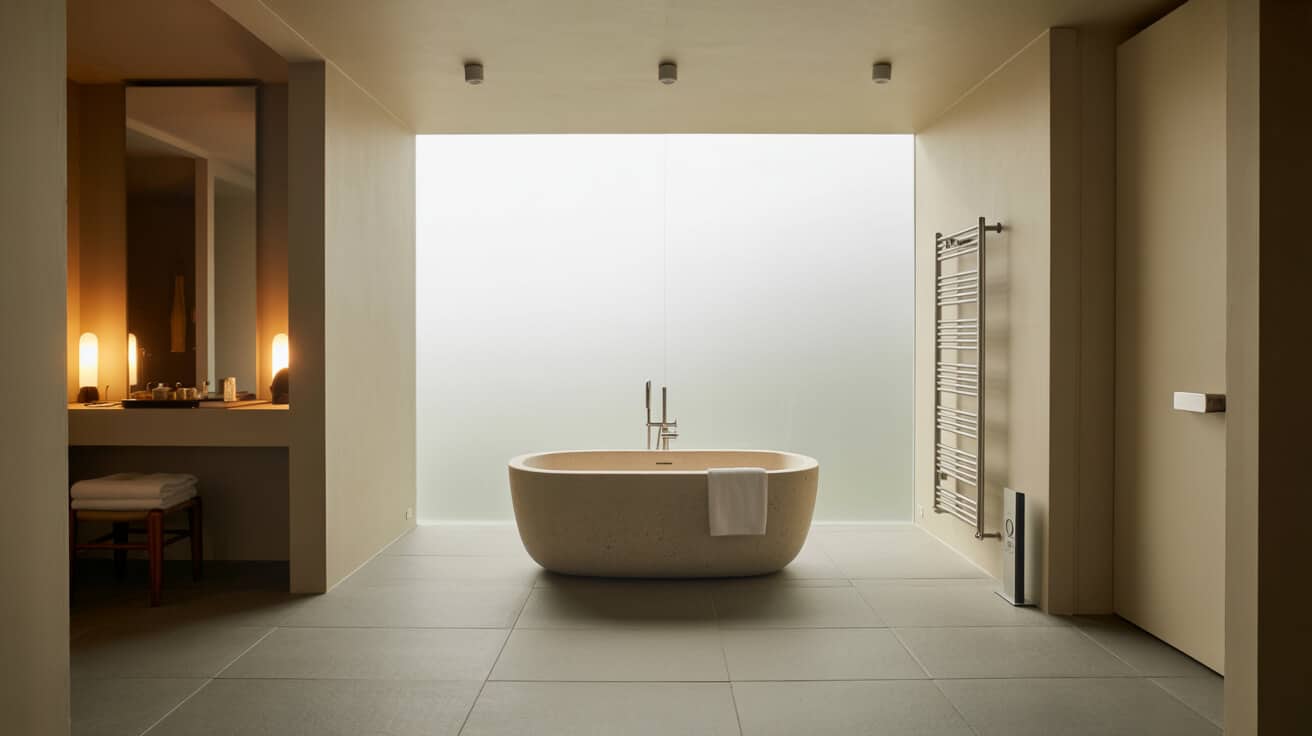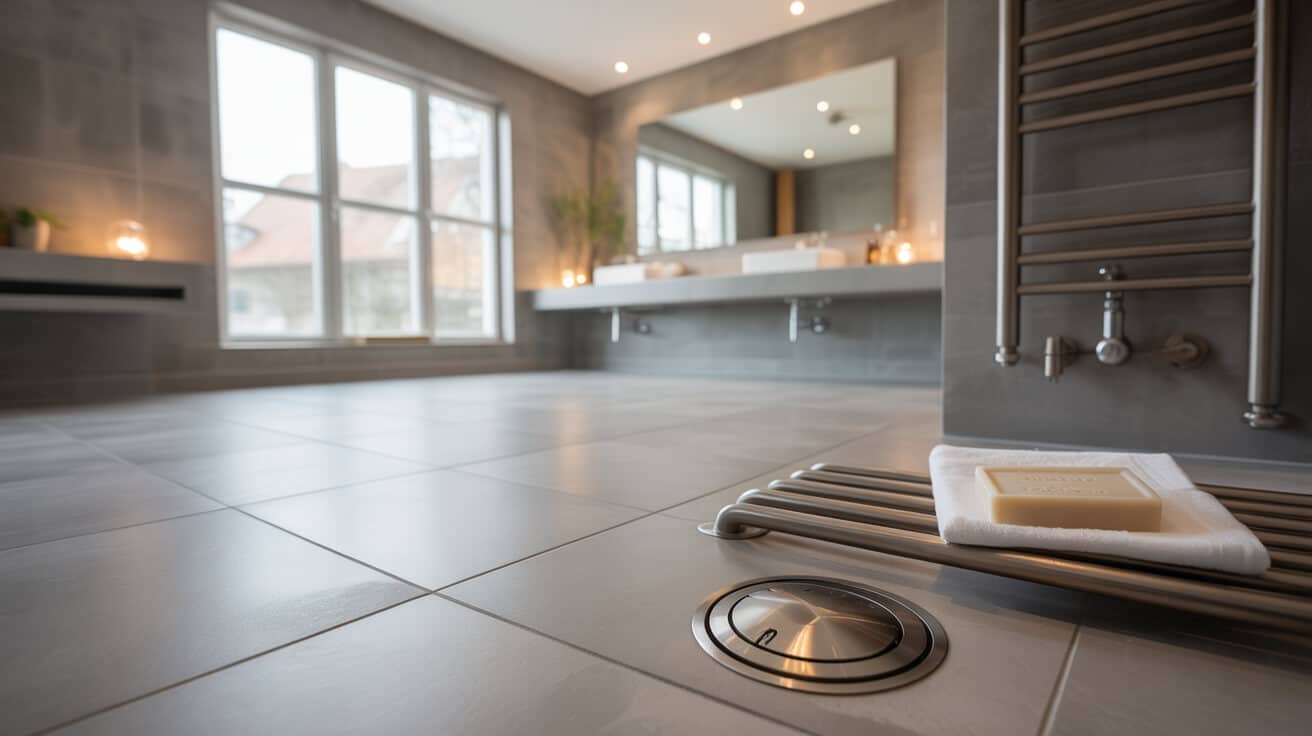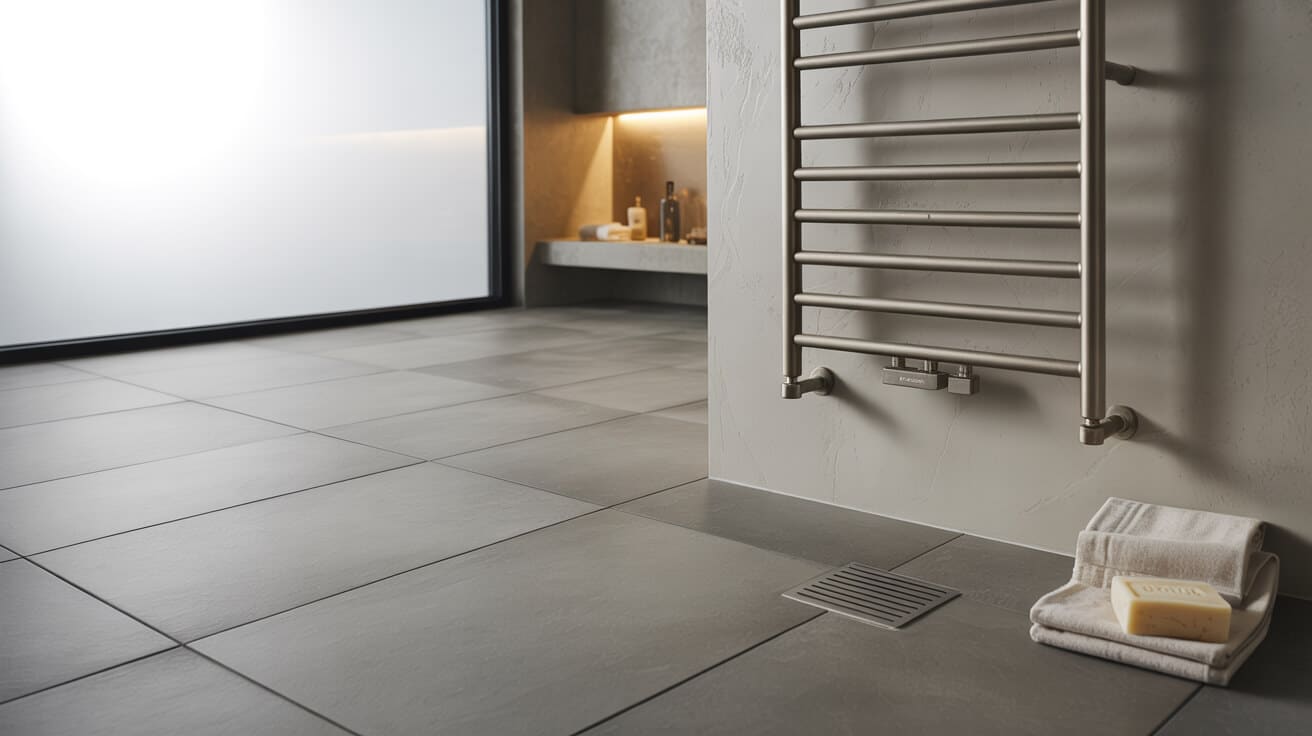Underfloor heating integrates pipes or electric cables into the flooring to emit radiant energy, offering uniform warmth and enhanced occupier comfort. Efficiency in these systems relies upon design factors such as insulation quality, accurate control, and correctly specified thermal mass. Modern installations reflect multi-disciplinary collaboration between engineers, suppliers, regulatory bodies, and property managers. Emphasis on high efficiency addresses your concerns about energy bills, environmental impact, and asset longevity, aligning both with property value enhancement and local regulatory demands.
Etymology or name origin
The phrase “underfloor heating” arose in mid-20th-century technical materials to specify systems distinct from conventional wall-mounted radiators. The term reflects integration beneath finish levels of the building envelope. Alternative nomenclature—such as “hydronic radiant floors,” “electrical radiant heating,” and in some cases “low-temperature surface heating”—is common in international standards. Evolutions in descriptor usage track advances in component technology, building controls, and regulatory frameworks.
Overview / context
Underfloor heating plays a central role in energy-efficient building design and environmental regulation. By leveraging a large surface area at low to moderate temperature, these systems achieve desired warmth with improved energy distribution, lower air stratification, and reduced convection-related discomfort. Their application spans apartments, luxury dwellings, offices, hotels, healthcare settings, and step-free environments, making them relevant to a spectrum of users and facility managers. Essential context includes questions of system type (hydronic vs. electric), compatibility with renewables, and compliance with standards such as Part L of building regulations or the Energy Performance Certificate (EPC) requirements. Adoption is accelerated by decarbonization policies, tenant demand for comfort, and potential for integration with renewable energy sources.
System context in building services
Radiant floor heating interfaces with existing plumbing, heating plant, and in some cases, sophisticated building automation systems. As heating infrastructure, it both complements and can substitute for traditional radiator or convector systems where design and occupancy support its deployment.
Integration with renewable energy and future-ready design
Underfloor systems can be paired efficiently with ground and air source heat pumps, solar thermal collectors, or advanced condensing boilers, taking full advantage of low-temperature operation and zoning control.
Market and regulatory drivers
Regulatory drivers include stricter minimum insulation standards, lower permitted CO₂ emissions, and requirements for smart control infrastructure. Uptake is further encouraged by locally available grants and property resale value.
History
Origins
Historical precedents for radiant floor heating span from Roman hypocausts, which distributed warm air beneath stone floors in bathhouses and villas, to the Korean ondol, which used heated pipes or flues under living areas. While motivated by available fuels and climatic context, both systems laid the groundwork for contemporary radiant technologies.
Industrial emergence
Key 20th-century innovations included the advent of reliable synthetic pipework (PEX, PB), improved screeds, and purpose-designed heating cable. Expansion of building codes and professional installation standards moved underfloor heating from experimental application to scalable market offering in residential and commercial property.
Contemporary evolution
Digital control, zoning, weather compensation, integration of renewable energy sources, and ever-higher standards for insulation characterise today’s market. Modern property portfolios, from single-family homes to multi-unit developments, increasingly treat radiant floors as a standard option rather than a luxury amenity.

Concept / description
Technical definition and operating principle
Underfloor heating operates by distributing energy across a large floor surface, emitting heat via conduction to the floor covering and by radiation to room occupants. System design involves either circulating heated water (hydronic) through embedded pipe networks or passing electricity through resistive cables or mats.
Hydronic systems
Pipes are typically arranged in loops or spirals, connected to a central manifold that enables zoning and individual room control. These systems exploit water’s high heat capacity, allowing precise temperature modulation, and are usually powered by boilers or heat pumps. Insulation below and at the edge of the pipework prevents energy loss to subfloors and external walls.
Electric systems
Flexible cables or pre-assembled matting elements are installed directly under the floor covering. These systems offer rapid response and are best suited to smaller rooms or refurbishment contexts where hydronic installation is impractical. Control is achieved through electronic thermostats and floor sensors, with over-temperature and safety cutoff features.
Thermal mass and lag
Thermal mass—provided by screed, tile, or stone floors—stores heat and allows for slow, even warmth release, but introduces a time lag between system activation and ambient temperature rise. Responsive heating is improved by using lower-mass overlays or systems with direct covering contact.
Critical efficiency dependencies
System performance is shaped by the quality and thickness of insulation, precision of control, design of pipe/cable layout, and maintenance standards.
Functionality / purpose / applications
Comfort and air quality
Radiant heating provides uniform room temperatures, prevents cold spots, and eliminates air movement that distributes dust and potential allergens. Floor temperatures typically remain safe to touch, increasing perceived comfort at lower air temperatures and supporting cost savings.
Adaptation to building context
In new developments, designers favour underfloor heating for its unobtrusive design and adaptability to modern insulation and airtightness standards. Retrofit and heritage projects can benefit from low-profile overlay systems, subject to floor load and clearance constraints.
Integration with modern controls and management
programmable thermostats, room-specific schedules, and advanced zone management enable dynamic temperature adjustment based on occupancy and usage patterns. Integration with building management systems or remote monitoring platforms allows optimization at scale—improving both comfort and compliance outcomes.
Special use cases
Healthcare and accessible spaces exploit underfloor heating to minimise trip hazards and ensure even temperature distribution—benefits valued by both property managers and specialised institutional stakeholders.
Classifications / types / variants
Hydronic systems
Hydronic underfloor heating varies by supply source (boiler, heat pump, solar thermal), layout pattern (serpentine, spiral), and balancing arrangements (single or dual manifold, actuator-based zoning). Flow temperature control (commonly 35–45 °C) and precise pipe spacing are crucial for maintaining efficiency.
Electric systems
Cable and mat systems are differentiated by wattage, substrate requirements, and installation method (in-screed, under-tile, floating floors). Sophisticated models feature adaptive programming, safety limiters, and integration with central management controls.
Hybrid systems
Hybrid systems support dual-source supply, e.g., boilers in winter and solar or heat pumps in shoulder seasons. Increasingly, hybrid arrangements feature both underfloor heat and radiators, coordinated by smart controls for load balancing.
Installation methods
Standard practices include full-depth screed embedment for new build, low-profile overlay for retrofits, and modular panel systems for commercial or office fit-outs.
Floor finish compatibility
Finishes such as stone and ceramic tile offer optimal conductivity, while engineered wood and certain laminates may require design adjustments. Carpeted installations demand special consideration for combined R-value, achievable output, and system cycling behaviour.
Systems / tools / methodologies
System design
Designers employ heat loss analysis tools, energy modelling, and building information modelling (BIM) to optimise zone sizes, output, and flow rates according to occupancy and window orientation.
Installation and commissioning
Installation requires pipe cutters, fixings (staples, tracks, mesh), manifold tools, leak testing devices, and balancing metres. thermal imaging validates uniformity in heat delivery before floor finishes are applied.
Controls and programming
Advanced programmable thermostats offer centralised as well as zone-by-zone control. Schedule templates, early start or setback profiles, and occupancy detection features are implemented for maximum efficiency, supporting both individual users and property managers with large portfolios.
Maintenance and servicing
Proper care includes scheduling annual hydronic flushes, verifying inhibitor levels, recalibrating sensors, and reviewing weather-compensation settings. Visual inspection of actuators and overall manifold condition is recommended at each service interval.
Troubleshooting methodologies
Technicians employ a combination of multimeter testing, thermal imaging, and zone-wise isolation to locate faults such as airlocks, blocked loops, or sensor failures. For owners, a basic checklist reviewing schedule settings, stat operation, and insulation integrity supports effective first-line diagnostics.

Stakeholders / entities involved
Plumbing and heating companies
Firms such as Plumbers 4U typically deliver services including needs assessment, system design, certified installation, performance optimization, ongoing maintenance, and user education, ensuring regulatory compliance and optimised system lifetime.
End users
Key personas—homeowners, landlords, facility managers, tenants, commercial asset holders—interact with underfloor heating from budget/purchase through operation, maintenance, and eventual upgrade or disinvestment. Each group’s priorities vary, from comfort and bill savings to regulatory compliance and asset longevity.
Suppliers and manufacturers
Pipe, cable, manifold, and control manufacturers provide the core physical components, often accompanied by accreditation schemes and technical standards guidance. Distributors and merchants ensure supply chain continuity and compatibility between system elements.
Regulatory bodies
The Chartered Institute of Plumbing and Heating Engineering (CIPHE), Water Regulation Advisory Scheme (WRAS), the Microgeneration Certification Scheme (MCS), and local building control offices play key roles in shaping and enforcing regulatory practice, installer accreditation, and consumer protection protocols.
Legal / regulatory / ethical considerations
Regulatory compliance
System planning and installation must address building codes such as Part L (energy), Part G (water safety), and BS EN 1264 (hydronic floor heating), which stipulate requirements for insulation values, controllability, maximum surface temperatures, documentation, and independent commissioning.
Installer certification and standards
Professional accreditation—such as G3 for unvented hot water, WRAS for water components, and MCS for renewables—is often mandatory for warranty validation and regulatory signoff. Documentation of design intent, commissioning results, and end-user guidance supports both compliance and aftercare.
Consumer protection and energy ethics
Warranties, system manuals, and handover instructions underpin commitments to long-term performance. Environmental ethics, such as responsible material sourcing, waste management, and lifecycle energy accountability, are increasingly regarded as integral to both commercial and regulatory acceptability.
Landlord and asset manager obligations
Landlords and responsible persons must ensure that systems in rental or managed accommodation comply with all standards, support efficient operation, and permit necessary maintenance and upgrades.
Performance metrics / data / measurements
Energy consumption and output metrics
Efficiency is measured by heat output versus energy input, typically recorded per square metre or per zone/room. Seasonal Performance Factors (SPF), Coefficient of Performance (COP), and running costs per period inform comparison with design expectations.
Benchmarks and standards
Industry-recognised benchmarks vary by system type, building fabric, and climate. EPC grading assesses a property’s overall efficiency, with best-in-class underfloor installations contributing materially to higher grades.
Monitoring, diagnostics, and reporting
Advanced systems support connected smart metres for real-time tracking. Building or property managers rely on sub-metering and trend data to identify anomalies and deploy maintenance resources effectively.
Data-driven improvement
Continuous feedback loops—comparing test data, energy usage, thermal imaging, and user-reported experience—inform iterative upgrades in programming, hardware, and building fabric.
Challenges / barriers / limitations
Operational and technical issues
Poor or missing insulation, under- or oversized pipe/cable arrays, incorrect balancing, or suboptimal control logic can degrade overall efficiency. Airlocks, sediment build-up, or sensor drift result in uneven heating and higher bills.
Economic and site constraints
Retrofitting presents challenges in floor height, door thresholds, or compatible finishes. Upfront investment remains higher than conventional installations, though proper assessment of lifecycle value and decarbonization potential frequently alters decision-making.
Integration and system compatibility
Complexities arise when legacy boilers, radiators, and smart controls must be combined. Insufficient training among contractors, incomplete documentation, or incomplete handover can hinder optimization and cause frustration for both users and asset managers.
Behavioural and communication issues
User misunderstanding—such as overriding slow-response controls or misusing programmable schedules—can reduce operational savings. Professional handover, user-awareness campaigns, and clear manuals address many of these pitfalls.
Impact / influence / legacy
Market transformation and uptake
Underfloor heating has shifted from a niche or luxury product to a mainstream heating option, particularly in well-insulated modern buildings and premium renovations. Enhanced property value and tenant appeal reinforce market momentum.
Documented energy and environmental benefits
Robust studies indicate that well-designed, well-maintained underfloor systems can yield greater comfort at lower energy cost compared to traditional radiators. These systems also contribute measurably to property EPC improvements, support renewable integration, and reduce overall carbon footprint.
Industry standards and professionalisation
The evolution of underfloor heating has driven widespread adoption of performance-based design, installer accreditation, and post-installation commissioning. Engineering guidance increasingly addresses building physics, long-term asset value, and whole-of-life service.
Transformation in user experience and asset value
From homeowner to facilities director, satisfaction with room comfort, indoor air quality, and operational predictability underscores the broad appeal and measured legacy of professionally managed underfloor heating.
Future directions, cultural relevance, and design discourse
Technological advancement and innovation
The future points to increased adoption of integrated digital control, AI and adaptive management algorithms, smart grid readiness, and new materials (e.g., vacuum panels or phase-change overlays). Smart zoning reacts dynamically to occupancy, weather patterns, and energy price signals.
Legislative and policy evolution
Ongoing decarbonization mandates, more ambitious EPC improvement requirements, and utility incentives will further shape system specification and predictive maintenance models. Regulatory environments are evolving to support connected devices and hybrid integration with renewable systems.
Cultural and design trends
As public narratives around healthy, comfortable, and sustainable homes grow, underfloor heating embodies both the psychological benefits of “invisible comfort” and market expectations for environmental stewardship. Specification in architectural competitions and media exposes new social meanings attached to system choice, especially in green, multigenerational, or universal design projects.
Professional debate and ongoing research
Debate remains active around best installation practice, hybridization with radiators, design for cycling reduction, and maintenance optimization. Industry research, property trials, and academic publication continue to refine definitions of best practice, resonating with all stakeholders across building, regulatory, and design domains.

